Are You Warm Enough to Start Dancing?
Authors: Brenton Surgenor and Andrea Kozai on behalf of the IADMS Dance Educators’ Committee
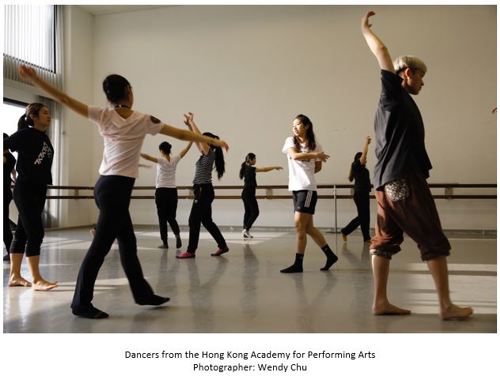
Warming up is essential before taking part in any type of dance activity, but it’s not always clear how to warm up effectively. This blog post sets out the what, why and some of the how-to’s of an effective dance-specific warm-up. This prefaces our new, upcoming Resource Paper on effective warm-up for dancers, which has much more information and advice on how to prepare the body for dancing.
Firstly, an effective warm-up will prepare you (or your dancers) mentally and physically to meet the challenges and physical requirements of a class, rehearsal, or performance. As the name suggests, a warm-up should increase your core body temperature, which prepares your muscles and joints to function effectively during dancing as well as reduces injury risk.
During the warm-up there is an increase in the amount of energy required by your working muscles. This means your body needs to consume more oxygen and fuel (glucose) to generate energy to power your muscles. A byproduct of all this extra energy production is the increase in body temperature that gives the warm-up its name, so the cardiovascular section of a warm up is vital in ensuring your body is ready to go. Therefore, sitting in the sun enjoying a hot coffee will not have the same benefits as a physical warm-up, as a warm-up ensures that your cardiovascular system, breathing rate, and energy-producing systems gradually increase to meet the higher demand for energy when you begin dancing.
A warm-up will have a number of other beneficial effects. These include: increasing the flow of synovial fluid (the lubricant in the joints), which allow your bones to slide more freely; improving the elasticity of your muscles, joints and ligaments for increased range of movement; and increasing the speed that signals travel through your nerves, which improves your overall balance, coordination and proprioception (your body’s ability to understand its orientation). For more information about proprioception see IADMS Resource Paper “Proprioception”.
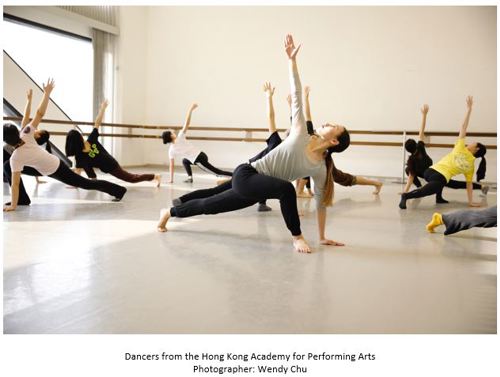
Whilst it’s good to include some stretching as part of your warm-up, not all types of stretching are beneficial before dancing. The role of stretching during a warm-up is to mobilize muscles and prepare them safely to carry out the range of motion required of dance activities, not to increase flexibility. Stretching should happen after the activation of the cardiovascular system and when core body temperature is raised. Dynamic stretching (taking the joint through a full range of motion in a slow and controlled way) is the best form of stretching in a warm-up. This is because research suggests static stretching (stretches held in one position for longer than 15 seconds) can have a negative effect on balance, proprioception (knowing where your body is in space) and the muscles’ ability to produce powerful quick movements like jumps (Morrin and Redding, 2013). While static stretching can be an important part of flexibility training it is not an appropriate method of warming up; on the contrary, the purpose of dynamic stretching is to ready the body for full range, dynamic motion (Quin, Rafferty and Tomlinson, 2015). For more about stretching, see IADMS Resource Paper “Stretching for Dancers”.
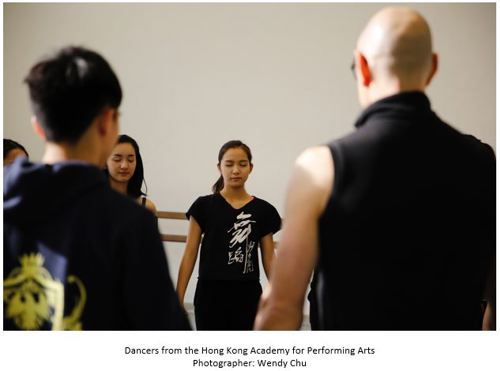
Warming up your mind is just as important as warming up your body. A good warm-up will give you an opportunity to check how you are feeling, to notice your posture and any unnecessary physical tension or pain. It can also help you concentrate and focus, which should contribute to technically better dancing and reduced risk of injury (Laws, 2005; Malliou et al., 2007).
Although a thorough and effective warm-up should take about 20 minutes, the time required is dependent on a number of factors including, but not limited to: whether the dancer has participated in any physical activity that day (is it the first class of the day or has the dancer recently completed another class); how warm or cold the environment is; and how much space and time is available for the warm-up. This should include a general physiological warm-up that prepares the core body temperature for physical activity. Importantly too, the warm-up should include specific activities that relate to the style of the dance to follow (Quin, Rafferty and Tomlinson, 2015).
A warm-up generally consists of three or four sections: a gentle pulse-raising section, a joint mobilizing section, a muscle lengthening section, and sometimes a second pulse-raising section (Quin, Rafferty and Tomlinson, 2015). The pulse-raising sections aim to increase cardiorespiratory and metabolic rates; these are the prerequisite to all further activity. The joint mobilizing section consists of gently moving the various joints through their ranges of motion, and the purpose of the muscle lengthening section is to prepare the muscles for the demands to come through the use of dynamic stretching (Wilmerding and Krasnow, 2017). It is also appropriate to include remedial exercises for injury prevention purposes at the end of the warm-up (Volianitis et al, 2001), and mental skills and preparation can be included at any stage.
Remember the benefits of a warm-up will be reduced or even lost once the body returns to its resting states of heart rate, respiration, and body temperature, so try to keep the time between the end of the warm-up and the dancing a minimum. Warm clothing and continued movement (but not static stretching) will help keep the body’s core temperature elevated. However, this is dependent on what happens after the warm-up (does the dancer keep moving or do they sit down and rest) and environmental elements such the ambient temperature. Cooler temperatures and the lack of movement may cause the effects of the warm-up to dissipate more rapidly.
Unfortunately, there is no magic recipe for warming up and the most important thing to remember is that the warm-up should be specific to the type of dance activity to follow (in other words a ballet warm-up will be different from a jazz warm-up). However, with an understanding of a few basic principles, it should be safe and easy for you to design a warm-up that works for you.
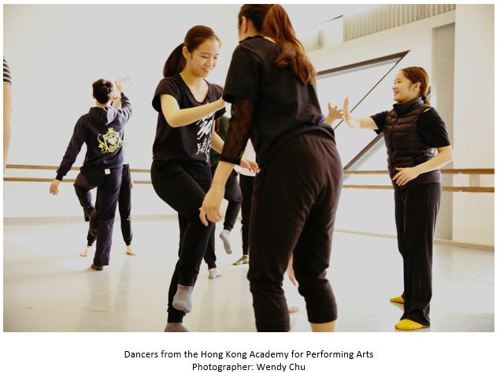
Here are some suggestions to help you design your perfect dance warm-up. 1. Involve your mind and take a moment to center yourself. Check in with how you are feeling; notice any areas where you need to give special attention. 2. Make your warm-up dance (and type of dance) specific. 3. Introduce an activity to gradually increase your heart rate. 4. Keep the movement simple to begin then progress to more complex and challenging movement patterns. 5. Mobilize all the joints in your body and don’t forget about your spine and upper body, especially if your dance style includes upper-body weight bearing or/and partnering work. 6. Give yourself a goal or try some positive self-talk. 7. Use dynamic stretching and take your body carefully through full ranges of motion saving the static stretching for the cool-down or the end of the day. 8. Wake up your nervous system by incorporating quick changes in direction and stopping to balance on one leg – this will engage your proprioceptors. 9. Once you are feeling warm and just a little bit sweaty, introduce some power movements like small jumps followed by some bigger ones. 10. Towards the end of the warm-up, pick the pace and progress your movement to speeds nearer the pace of the following dance activity.
Whatever you choose to include, by the end of the warm-up you should feel ready to meet the mental and physical challenges of dancing. For more detailed information, check out the new IADMS resource paper on warming up for dancers.
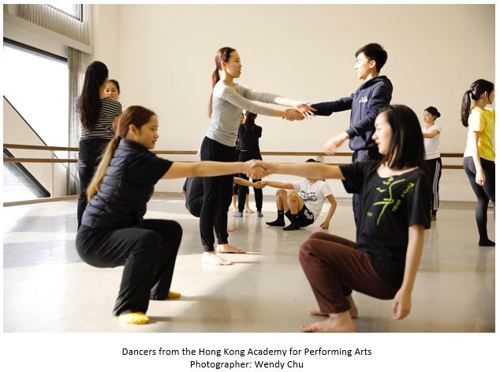
For more information about warming up see the following resources.
1. Harris J, Elbourn J. Warming up and cooling down. Champaign, IL: Human Kinetics, 2002.
2. Laws, H., & Apps, J. (2005). Fit to Dance 2: Report of the second national Inquiry into dancers' health and injury in the UK. Dance UK.
3. Malliou, P., Rokka, S., Beneka, A., Mavridis, G., & Godolias, G. (2007). Reducing risk of injury due to warm up and cool down in dance aerobic instructors. Journal of Back and Musculoskeletal Rehabilitation, 20(1), 29-35.
4. Morrin, N., & Redding, E. (2013). Acute effects of warm-up stretch protocols on balance, vertical jump height, and range of motion in dancers. Journal of Dance Medicine & Science, 17(1), 34-40.
5. Quin E, Rafferty S, Tomlinson C. Safe Dance Practice. Champaign, IL: Human Kinetics, 2015.
6. Volianitis S, Koutedakis Y, Carson R. Warm Up: A Brief Review. Journal of Dance Medicine and Science 2001; 5(3): 75-79.
7. Wilmerding MV, Krasnow DH (eds). Dancer Wellness. Champaign, IL: Human Kinetics, 2017.
Written by Brenton Surgenor (BPhEd, MA, MSc), Hong Kong Academy for Performing Arts and Andrea Kozai (MSc, CSCS), Virtuoso Fitness